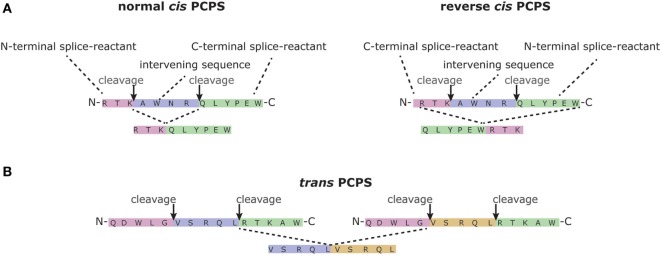Figure 1.
Proteasome-catalyzed peptide splicing (PCPS). PCPS may occur in different ways. (A) The two splice reactants can be generated by proteasome-mediated cleavage of a single peptide sequence (cis-PCPS), the excision of the sequence between the two splice reactants (namely the intervening sequence), followed by the ligation of the splice reactants in normal order, i.e., following the orientation from N- to C-terminus of the parental protein (normal cis-PCPS), or in the reverse order (reverse cis-PCPS). We here graphically report the formation of the spliced epitopes gp100mel40-42/47-52 (2) and gp100mel47-52/4042 (5). (B) PCPS can occur between two splice reactants originating from two distinct proteins (trans-PCPS) (6, 7). Although the latter occurs in vitro (6–8), its occurrence in cells is disputable (7). We here show the example of the spliced peptide gp100mel35-39/35-39, which has been identified in in vitro digestions of synthetic substrate by purified proteasomes (9).

